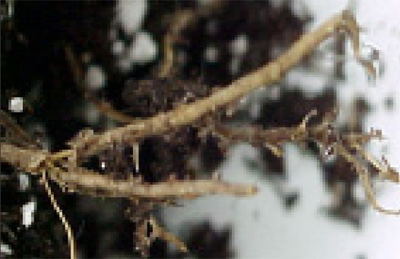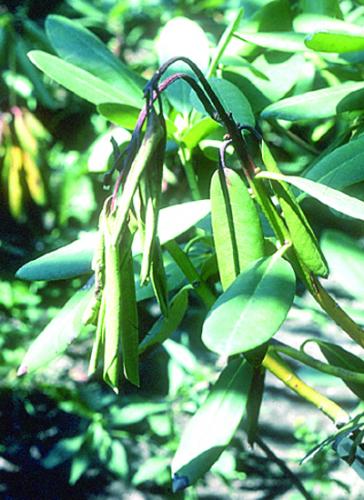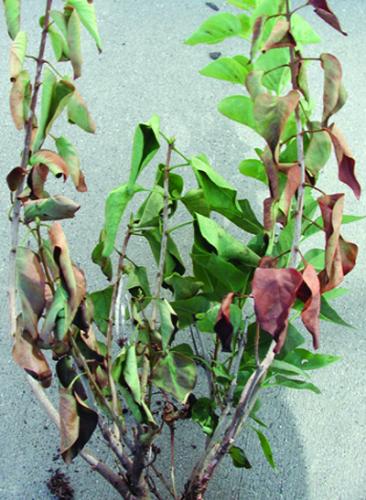Phytophthora root and crown rot, top dieback
July 30, 2015
Cause
Phytophthora spp., soilborne plant pathogens that belong to the group of fungi known as water molds.
Hosts
Azaleas and rhododendrons and Frasier fir are among the most susceptible. A partial list of other hosts includes: arborvitae, boxwood, cotoneaster, dogwood, elm, lilac, honeylocust, juniper, maple, magnolia, oak, pine, privet and yew.

Wilting and dying foliage due to phytopthora root rot.
Symptoms
Both aerial plant tissues and roots may be infected. Symptoms include wilting foliage and brown, rotted roots. Branches that have been invaded and girdled by the fungus wilt and die back. The diseased wood at the base of the branch near the soil line turns brown.

Dieback of rhododendron branch due to stem infection by Phytophthora sp.
How it’s spread
Infection of plant stems and leaf petioles (see photos) may develop when the fungus is splashed onto aerial plant parts. Spores that develop on infected stems and petioles may be washed down to infect roots.
Management
Confirm your field diagnosis by sending in a sample to MSU Diagnostic Services for positive identification of the fungus. Avoid overhead watering or wetting the foliage of susceptible plants. Plants weakened by drought stress or planted in wet soils are more susceptible to infection by Phytophthora spp. Fungicides are not effective if plants have already been infected; remove and destroy infected plants. Susceptible plants growing in close proximity to infected ones should be treated promptly with a preventative fungicide.


This lilac is infected with the Phytophthora fungus; note the junction of diseased and healthy wood where the stem has been girdled.
Print a PDF of this page: Phytophthora root and crown rot, top dieback



 Print
Print Email
Email



